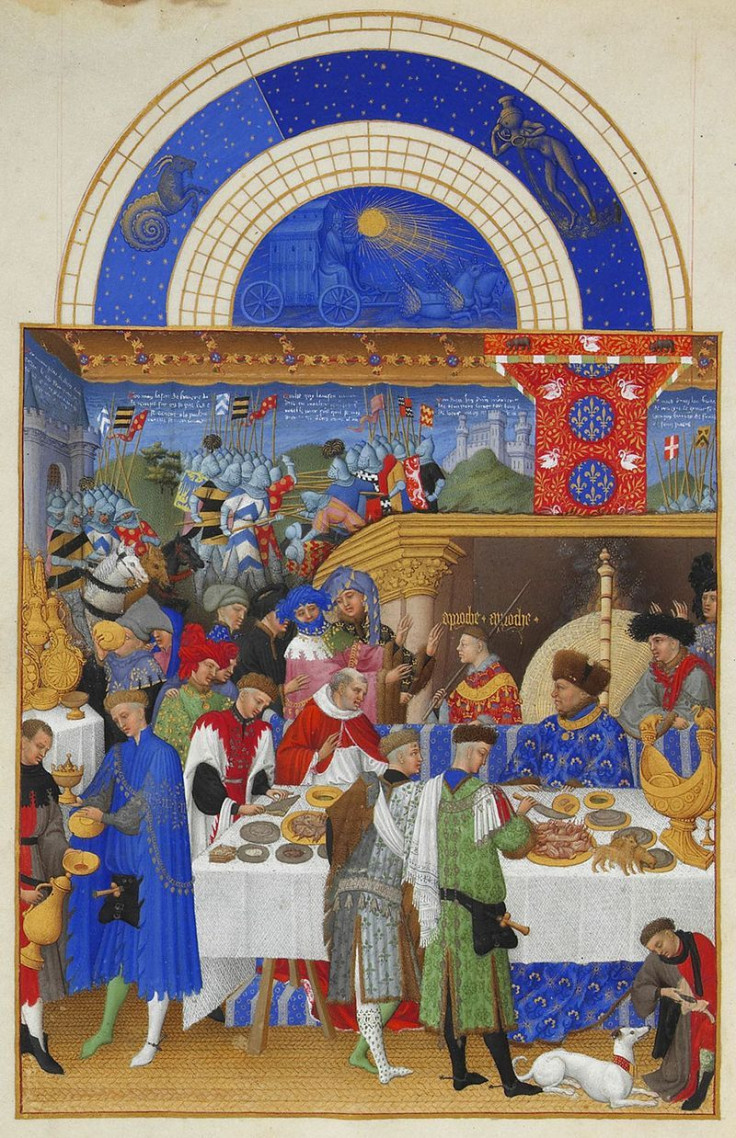Being Wealthy In Medieval Times Led To More Health Problems And Early Death Due To Lead Poisoning

The medieval peasant often gets the bad reputation of being the poor, filthy, and unlucky one. Living in unsanitary conditions, being worked to the bone, and hardly eating any meat, one would imagine that the rural serfs of the Middle Ages were the ones to die young. But a new study re-examines that belief, finding that in reality being rich — or living in a city — in the Middle Ages put people at a higher risk of illness and death than previously believed.
Why? Because their luxuries — glazed cups and plates and utensils — were filled with lead, a chemical that when ingested can lead to an array of health problems and even an earlier death. And in medieval cities, lead sources were everywhere: from stained glass windows and tiles on roofs, to drinking water collected from roofs.
“Lead poisoning can be the consequence when ingesting lead, which is a heavy metal,” Kaare Lund Rasmussen, associate professor at the Department of Physics and Chemistry at the University of Southern Denmark, said in the press release. “In the Middle Ages you could almost not avoid ingesting lead, if you were wealthy or living in an urban environment. But what is perhaps more severe, is the fact that exposure to lead leads to lower intelligence of children.”
In the study, the researchers examined 207 skeletons from six cemeteries in northern Germany and Denmark. Two cemeteries, Rathaus Markt in Germany and Ole Worms Gade in Denmark, were home to richer people from medieval towns; four other cemeteries were filled with rural skeletons. They found that lead levels were high in people who had lived in urban places, while rural individuals had little to no lead in their bones. People who lived in the country were considerably poorer than those who lived in cities; as such, they couldn’t afford glazed pottery.
“In those days lead oxide was used to glaze pottery,” Rasmussen said in the press release. “It was practical to clean the plates and looked beautiful, so it was understandably in high demand. But when they kept salty and acidic foods in glazed pots, the surface of the glaze would dissolve and the lead would leak into the food.”
However, about 30 percent of the country folk had been exposed to lead — meaning that even poor people had occasional contact with it.
Sources Of Modern Lead
While lead poisoning was certainly far more common in ancient and medieval times, we’re likely to still be exposed to it today. According to the Centers for Disease Control and Prevention (CDC), some four million households in the U.S. have exposed children to dangerous levels of lead. Lead-based paint, lead-contaminated dust, and lead plumping are the main sources of lead poisoning in today’s day and age, even though lead-based paints were banned from housing in 1978. Plenty of houses built before 1978 are likely to have lead in their paint; and when the paint begins peeling, there becomes a problem, according to the CDC.
If you’re concerned about lead poisoning, check to see if you have any of the following symptoms: high blood pressure, stomach pain, joint/muscle pain, loss of memory, mood disorders, or fertility problems. Children before the age of 6 are the most vulnerable to lead exposure, as their growing bodies can be damaged by the toxic metal. Children who have been exposed to high levels of lead may experience learning disabilities or delays, as well as other physical symptoms that can be found here.
Some prevention tips include removing any chipped paint from your walls, cleaning off dust from windowsills, and keeping children away from old toys or furniture that might have been made before 1978. If you’re concerned that there is lead in your water pipes, let the water run for a while before drinking it; only drink cold water; and use an attachable faucet water filter to remove any metals or impurities from your tap water before drinking it.
Source: Rasmussen K, Skyttea L, Jensena A, Boldsenb J. Journal of Archaeological Science. 2015.



























